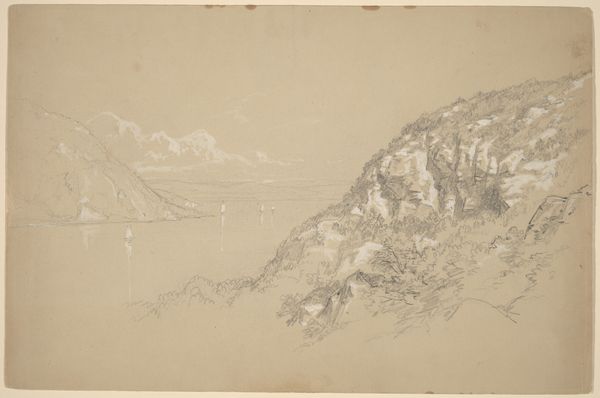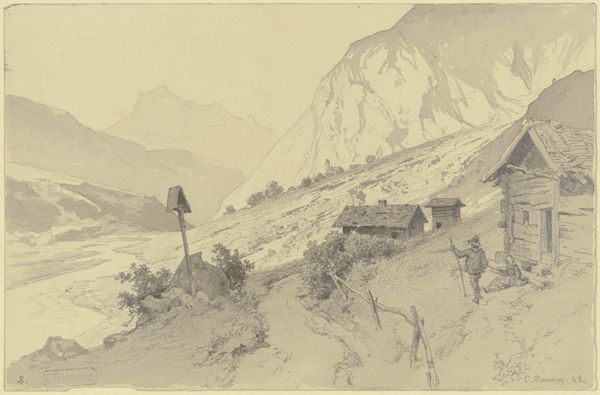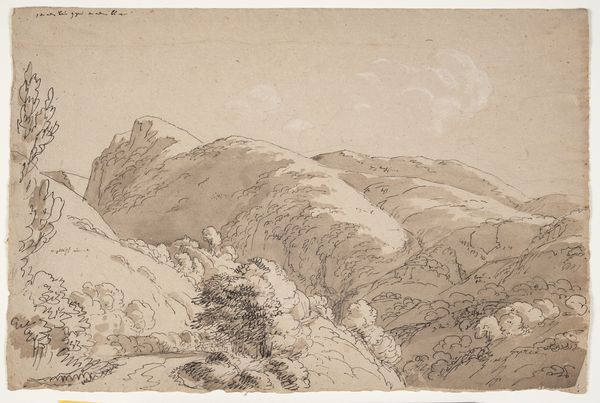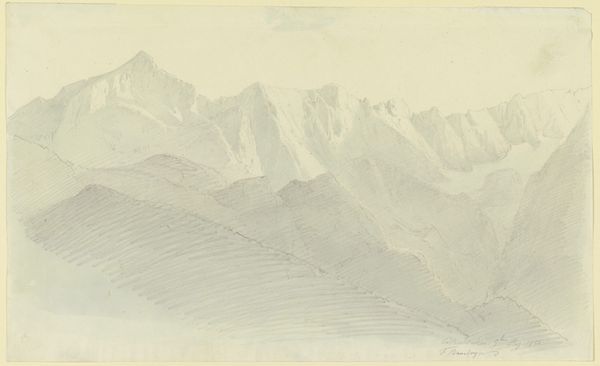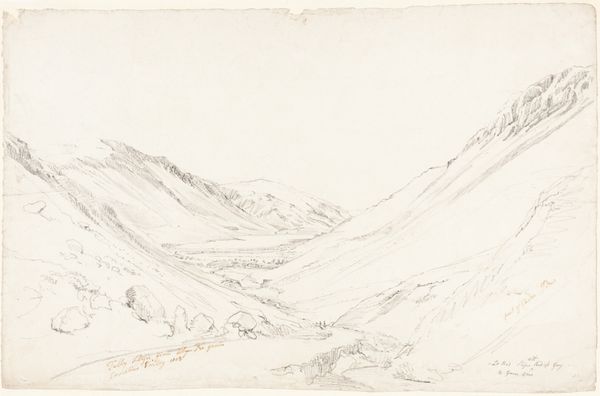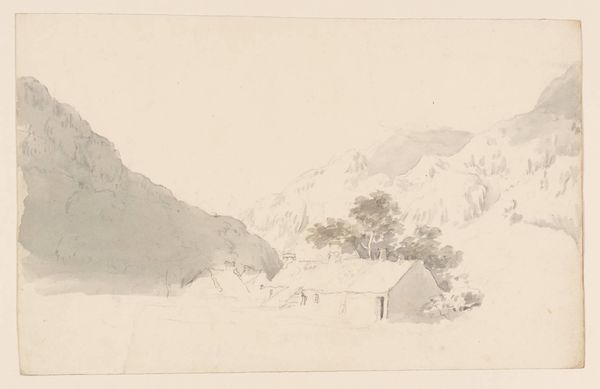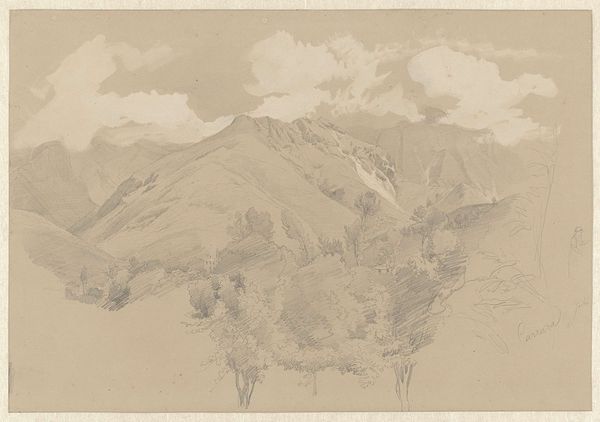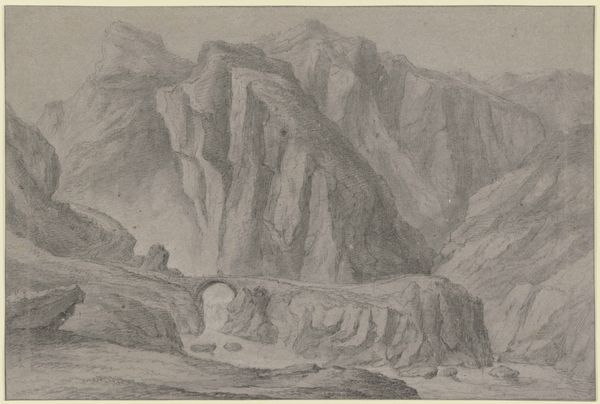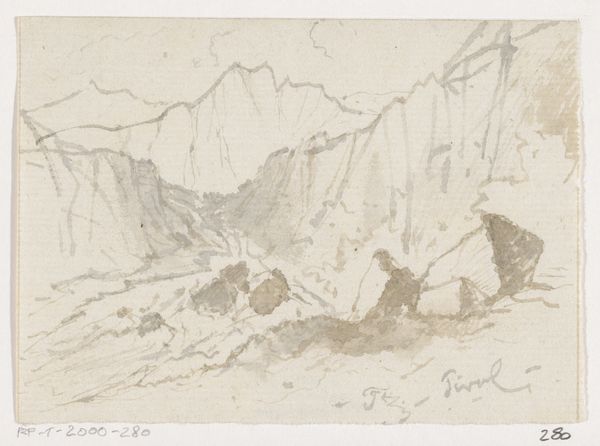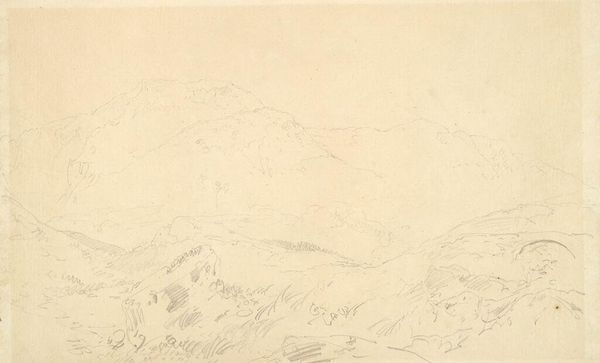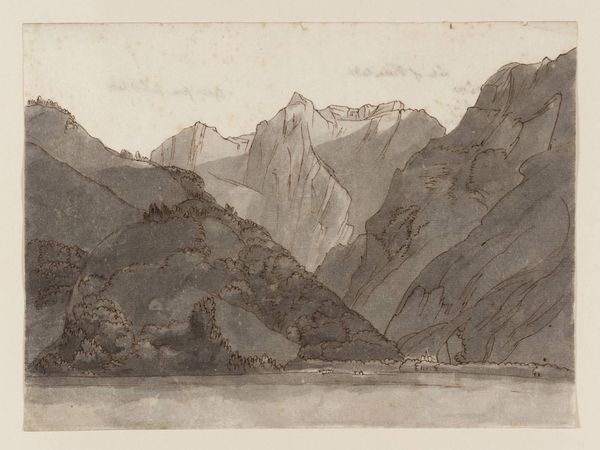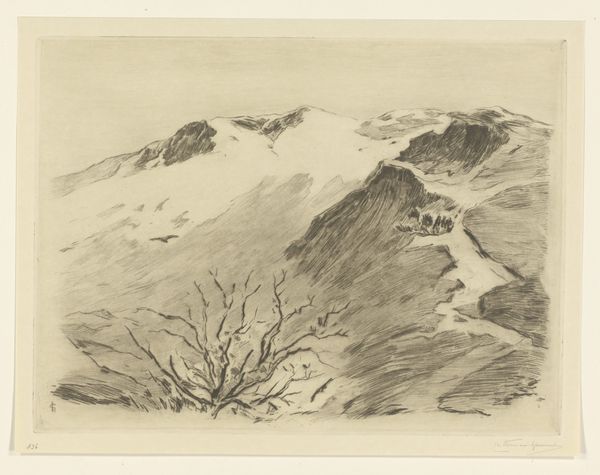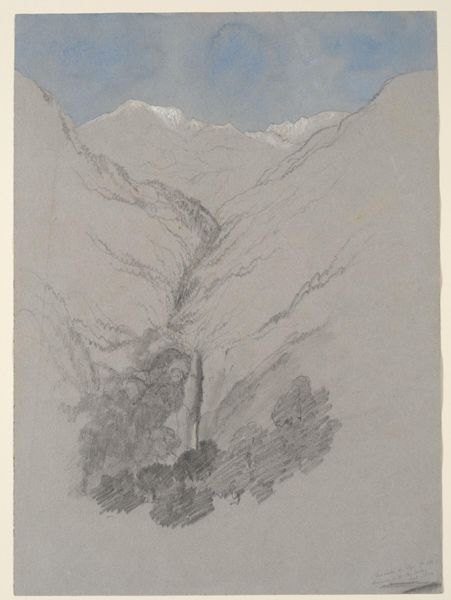
drawing
#
drawing
#
landscape
#
romanticism
Dimensions: 282 mm (height) x 355 mm (width) (bladmaal)
Curator: I find myself immediately struck by the melancholic quietude emanating from John Constable's 1801 drawing, "Dallandskab." The subtle tonal variations in the grey wash create such an atmospheric depth. Editor: Yes, the stillness is palpable. This feels like a moment captured in the liminal space between romanticizing nature and actually grappling with its material reality under enclosure. This was, after all, a period when the landed gentry were privatizing common lands, pushing rural communities further into poverty. Did landscape painting become a form of idealization, obscuring this brutal context? Curator: Certainly, Constable was known to imbue his landscapes with sentiment, though I tend to see the structure more so as evidence of his profound technical skill. Observe the way he uses cross-hatching to define form and create subtle modulations in light. The very materiality of the drawing is its message: paper, graphite, skillful rendering. Editor: But we can't divorce the medium from its historical usage. Drawing was crucial in the project of exploration, cataloging resources. There's power here—drawing not just the scenery, but potentially claiming territory. Curator: Perhaps, but there's a definite restraint in Constable's hand. Note his masterful composition and how he employs soft gradients for transitions between different topographical zones; it is a formal dance. It does more than document: it constructs an idealized visual space. Editor: But is this 'idealized visual space' also an elitist's escape? Think about how this serene scene differs vastly from the lived reality of rural communities. Was Constable even aware of the issues affecting working people, or was he looking solely from the perspective of the property-owning class? It is imperative we examine not just how he created form but how it creates ideas about land. Curator: I will allow that perspective; however, one must appreciate the artist's sensitivity. His delicate use of light and shadow adds layers of depth—not only technically speaking, but artistically! He imbues the scene with what is almost an emotional charge. It reflects something fundamental in our humanity... Editor: ...Or, more accurately, an emotional response that reflects humanity within a specific power dynamic. It's difficult to overlook who had access to this scenery in that era—whose gaze was validated and immortalized—versus whose labor shaped it but remained unacknowledged, literally obscured by shadows and distance. Curator: Even still, one can marvel at how this drawing uses tone and line alone to make something sublime from these basic means. Editor: Of course. Let’s strive, though, to be equally acute at analyzing power as we are at appreciating artistry.
Comments
No comments
Be the first to comment and join the conversation on the ultimate creative platform.
